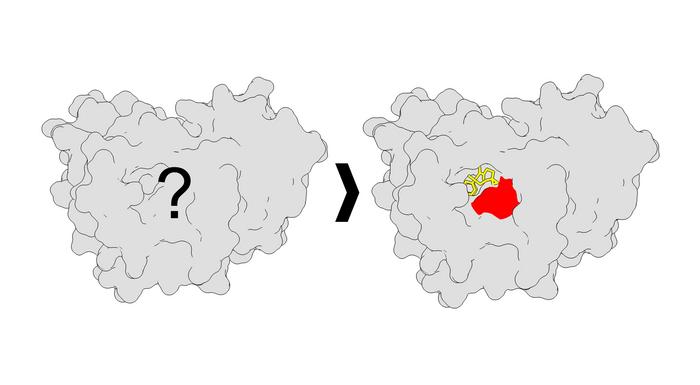LA JOLLA, CA—Identifying new ways to target proteins involved in human diseases is a priority for many researchers around the world. However, discovering how to alter the function of these proteins can be difficult, especially in live cells. Now, scientists from Scripps Research have developed a new method to examine how proteins interact with drug-like small molecules in human cells—revealing critical information about how to potentially target them therapeutically.

Credit: Scripps Research
LA JOLLA, CA—Identifying new ways to target proteins involved in human diseases is a priority for many researchers around the world. However, discovering how to alter the function of these proteins can be difficult, especially in live cells. Now, scientists from Scripps Research have developed a new method to examine how proteins interact with drug-like small molecules in human cells—revealing critical information about how to potentially target them therapeutically.
The strategy, published in Nature Chemical Biology on January 2, 2024, uses a combination of chemistry and analytical techniques to reveal the specific places where proteins and small molecules bind together. Ultimately, this method could lead to the development of more targeted and effective therapeutics.
“Our new technology could be used to find new druggable sites on proteins for any human disease, from cancer to Alzheimer’s disease,” says associate professor, Department of Chemistry Christopher Parker, PhD, senior author of the study. “We’re unrestricted in how this could be used. Our work has the potential to usher in a whole new way of drug discovery.”
The Parker lab aims to discover how proteins function in every human cell type to develop effective therapeutics for a wide range of human diseases. In this study, Parker and his team built off his initial work in the lab of Scripps Research professor Benjamin Cravatt to create a new method of examining how proteins interact with small molecules in living cells. They developed an analytical strategy to better understand how these proteins engage with small molecules at much higher resolution than ever before. To do this, they used chemical probes called photoaffinity probes, which are molecules that can be activated by light to allow the probes to capture a bound protein.
By gathering data from the interactions of proteins with photoaffinity probes, the Parker team identified locations on proteins where small molecules could connect and bind. Essentially, the team found over a thousand new locks (binding sites on the proteins) and corresponding keys (small molecules), the vast majority of which were new places of small-molecule binding that had not been reported before. Additionally, they found new features of the binding sites–such as new shapes.
“Identifying these specific binding sites will help scientists design new molecules that fit these pockets even better, potentially leading to more effective therapeutics,” says Jacob M. Wozniak, co-first author, and former postdoctoral fellow in the Parker lab. The other co-first author of the paper was Weichao Li, PhD, a research associate also in the Parker lab.
Using the wealth of data in this study and collaborating with co-author Stefano Forli, PhD, associate professor in the Department of Integrative Structural and Computational Biology, the authors then modeled how certain molecules might bind to these proteins. This library of information could be used to design therapeutics that interact with proteins in a more targeted way.
“Our new process reveals additional opportunities for therapeutic intervention and discovery in human cells,” says Parker. “Next, we plan to use this technology to target proteins relevant for autoimmune diseases and cancer.”
Authors of the study, “Enhanced Mapping of Small Molecule Binding Sites in Cells” include Jacob M. Wozniak, Weichao Li, Paolo Governa, Li-Yun Chen, Appaso Jadhav, Stefano Forli and Christopher G. Parker of Scripps Research; and Ashok Dongre of Bristol-Myers Squibb.
This work was supported by finding from the National Institute of Allergic and Infectious Diseases (R01 AI156258, 1U19AII71443-0, and T32AI007244) and National Institutes of Health (R01GM069832).
About Scripps Research
Scripps Research is an independent, nonprofit biomedical institute ranked one of the most influential in the world for its impact on innovation by Nature Index. We are advancing human health through profound discoveries that address pressing medical concerns around the globe. Our drug discovery and development division, Calibr, works hand-in-hand with scientists across disciplines to bring new medicines to patients as quickly and efficiently as possible, while teams at Scripps Research Translational Institute harness genomics, digital medicine and cutting-edge informatics to understand individual health and render more effective healthcare. Scripps Research also trains the next generation of leading scientists at our Skaggs Graduate School, consistently named among the top 10 US programs for chemistry and biological sciences. Learn more at www.scripps.edu.
Journal
Nature Chemical Biology
DOI
10.5281/zenodo.8326534




